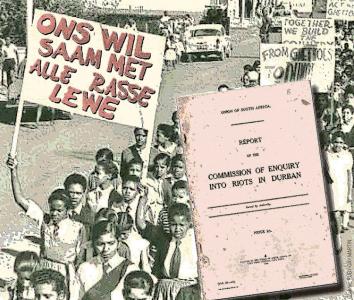
Archive category
Name of publication
Publication date
Published date
Related Collections from the Archive
Related content
Every time there is violence of a particular sort in SA I think about 1949. In mid-January of that year a single incident between an Indian shopkeeper and a young African man sparked days of tremendous brutality across Durban.
The National Party government had been elected less than a year before and had not yet had the opportunity to implement its plans to segregate the city. Blacks and Indians lived cheek by jowl in and around the docks and city centre, in hostels and the tightly packed lanes of shops, mosques and markets. They shared the streets, more or less peacefully.
But not that January, 70 years ago. Then, those parts of the personality most people strive to keep hidden were thrust into public. By the time the violence ebbed, almost 200 people had died and tens of thousands had been rendered homeless.
The scale of the recent xenophobic attacks in Gauteng obviously does not compare to that of 1949, nor do we approach those horrific numbers even when you combine the costs of all of the violence that has targeted so-called “foreign nationals” since first similar attacks began more than a decade ago.
But not that January, 70 years ago. Then, those parts of the personality most people strive to keep hidden were thrust into public. By the time the violence ebbed, almost 200 people had died and tens of thousands had been rendered homeless.
The scale of the recent xenophobic attacks in Gauteng obviously does not compare to that of 1949, nor do we approach those horrific numbers even when you combine the costs of all of the violence that has targeted so-called “foreign nationals” since first similar attacks began more than a decade ago.